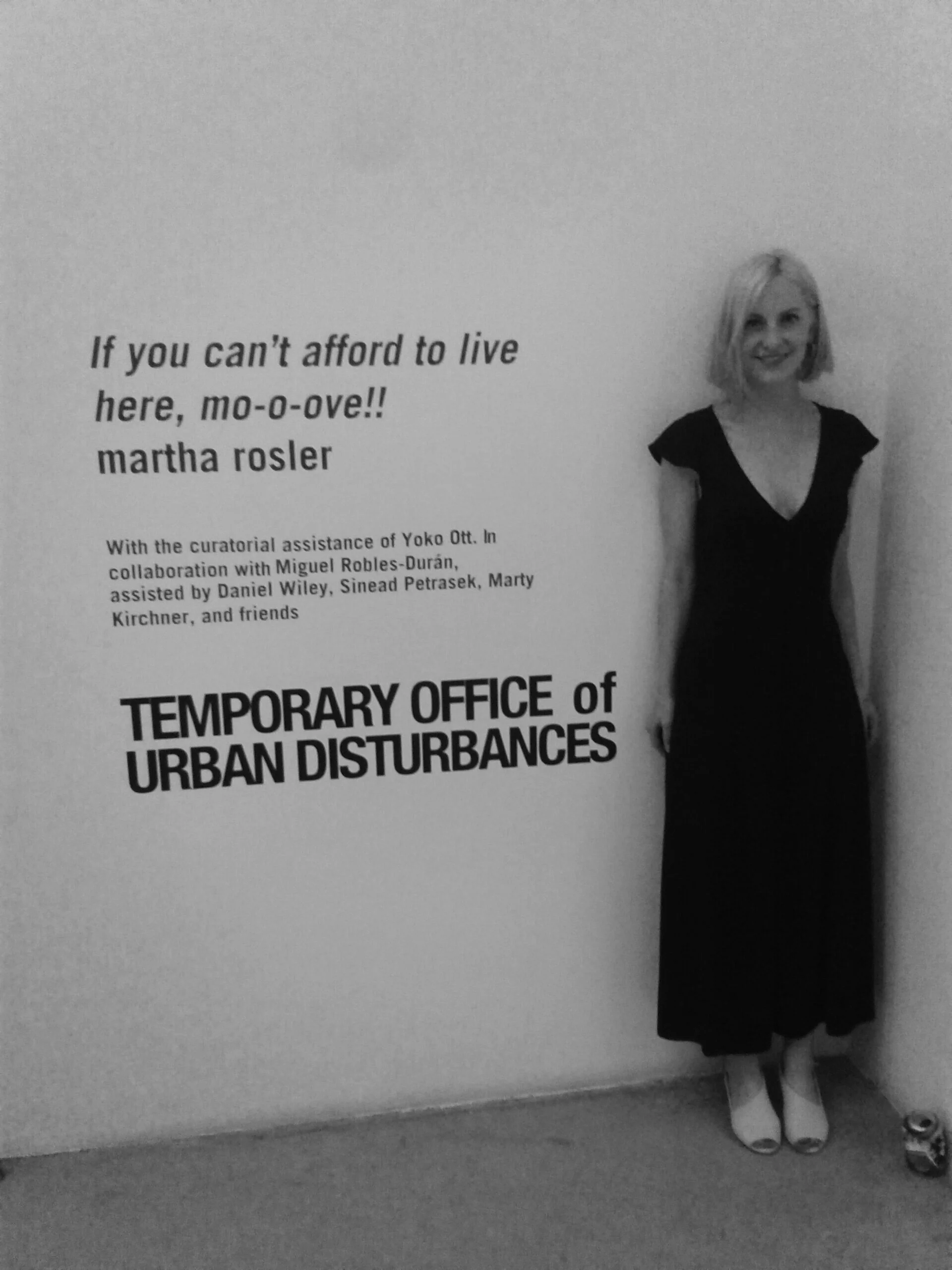2016
In May 2016, I began working on Martha Rosler’s exhibition, If You Can’t Afford to Live Here, Mo-o-ove! which expanded on the growing archive of films, videos, flyers, books and artworks amassed by Rosler since 1989. This unique and extensive collection documents tenant movements, gentrification, urban development, and homelessness in New York City. I organized four town hall events that generated important discussion among New York-based activists, scholars, artists and community organizers about issues facing urban dwellers, including urban planner Peter Marcuse, who was quoted on one of the gallery walls: “Homelessness exists not because the system is not working, but because this is the way it works.” My role with these town hall forums led to a significant opportunity for me to work on numerous additional public events and exhibitions with cultural producers around the world as a Project Manager with Martha Rosler in her studio in New York.
Selected pitch presenters and jury members, 2017.
In 2017, I was selected for the “Pitches for Toronto” session as part of the IdeasCity Toronto festival, jointly hosted by The New Museum (NYC) and The Bentway (TO). I proposed an exhibition on civic action in the period leading up to the amalgamation of the six boroughs into the City of Toronto in 1998, and the resulting legacy that this merger engendered. In my presentation, I emphasized the importance of allowing Torontonians to learn from the critical record of dissent and progressive activism in urban space. I presented to a broad public audience and a jury of renowned urban planners and museum curators.
Questions on Dwelling
In 2020, I began working with Zoë Ritts and Sophie Marthe as part of a collective called Questions on Dwelling. Our first initiative was a screening of the documentary film, What It Takes to Make a Home, produced by the Canadian Centre for Architecture. The film, directed by Daniel Schwarz and conceived by Giovanna Borasi, focuses on urban homelessness, asking how architecture, understood broadly, might respond.
A small publication of the ensuing conversation is forthcoming.

